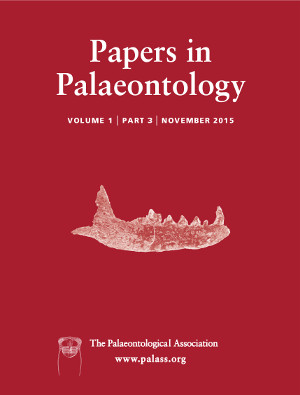Reg. Charity No. 1168330

Through a comparative study with the British type material, several dalmanelloid brachiopod species from the Upper Ordovician of the Cincinnati Arch area of North America (Laurentia) are now confirmed to belong to Heterorthina Bancroft. These include several species previously treated variously as Dalmanella or Onniella, including such classic and widely cited species as ‘Dalmanella’ emacerata (Hall) and Dalmanella fairmountensis Foerste. These North American forms of Heterorthina belong to the dalmanelloid clade that is characterized by a dorsal medial interspace, and of cool to cold-water origin. Outside of Laurentia, Heterorthina occurs predominantly in Avalonia and peri-Gondwanan terranes, such as Iberia (Spain), Armorica (France) and Bohemia, palaeogeographically located between 40° and 60° south. The episodic occurrences of several Heterorthina species in the lower to middle Katian of the Cincinnati Arch area, located around 20°S in the Late Ordovician, are interpreted as opportunistic invasions of a cool-water brachiopod fauna from higher palaeolatitudes, associated either with oceanic cooling events or with relatively cool deep-water mass incursions during marine transgressions.